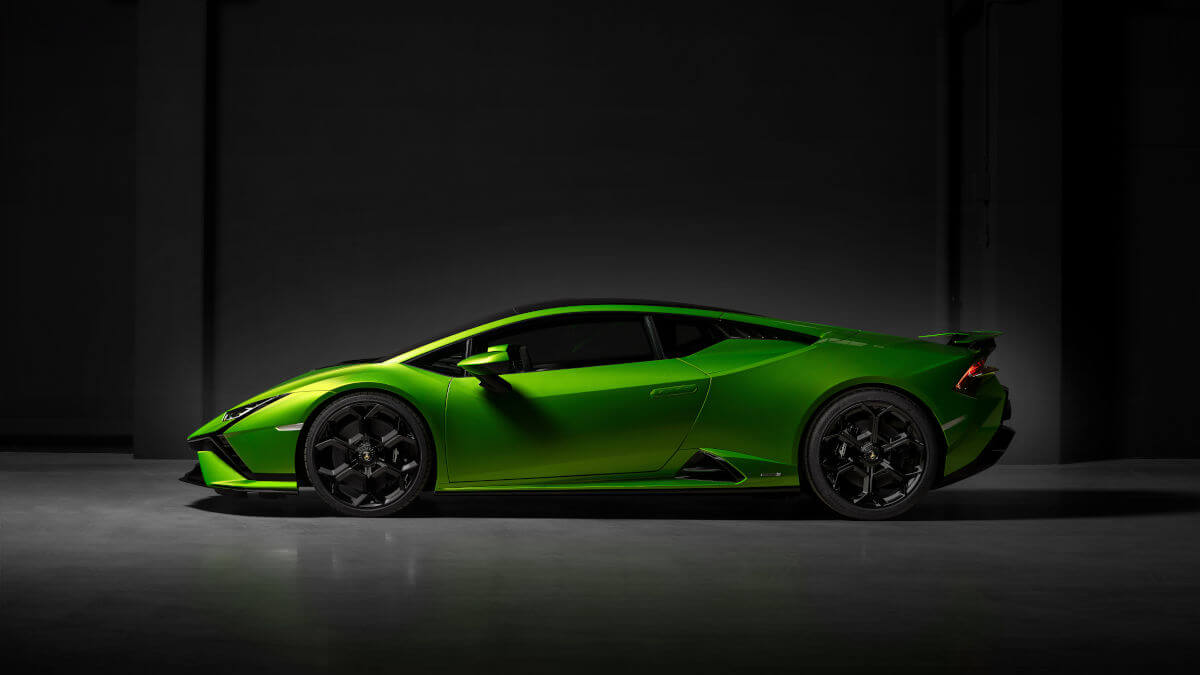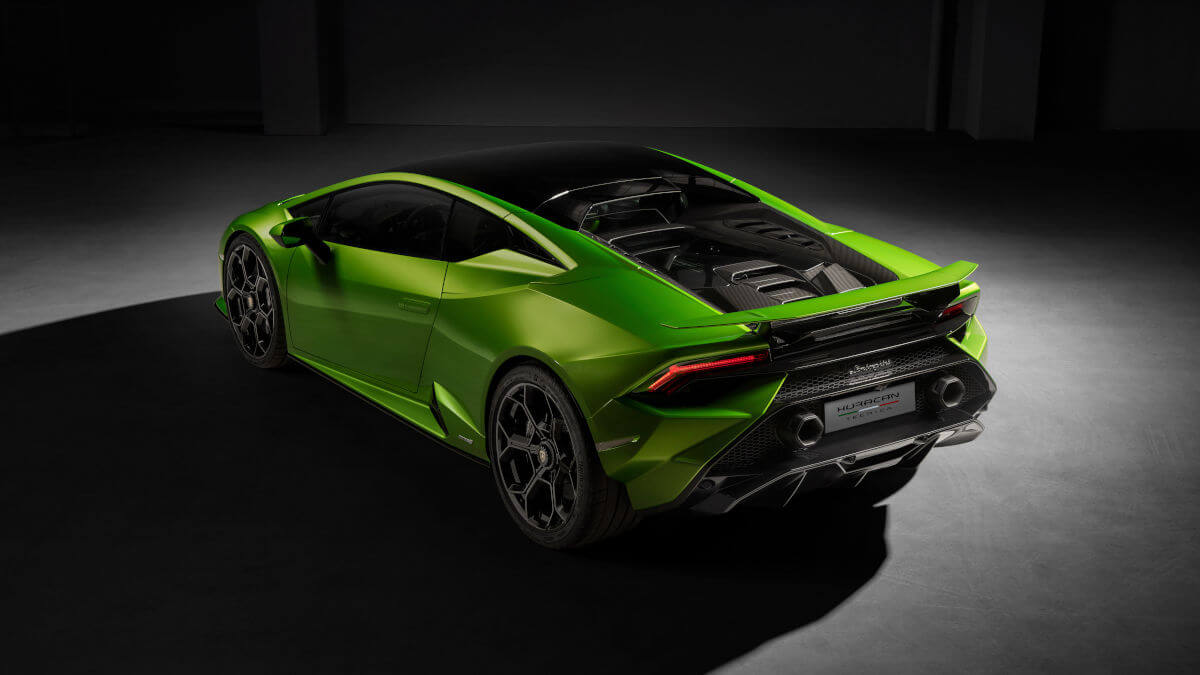Lamborghini Huracán Tecnica
Sports cars with naturally aspirated engines are a dying breed. More and more manufacturers are reducing their range and switching to turbocharging, hybrids or directly to electric drive. Meanwhile, Sant’Agata, a small Italian town, apparently didn’t get the memos. With the new Huracán Tecnica, the Lamborghini brand based there impressively proves that there is still plenty of life in the naturally aspirated engine concept. Strictly speaking, the same V10 engine as in the Huracán STO is behind the two passengers. From 5.2 liters of displacement, the engineers here scoop up 470 kW/640 hp and 565 Nm of torque. This is 30 hp more than in the Huracán Evo RWD, which is still on offer. Power is transmitted to the rear wheels via a seven-speed dual-clutch transmission. This reduces the acceleration time to 62 mph to 3.2 seconds. Lamborghini states 202 mph as the topspeed.
Revised driving systems
Compared to the Huracán STO, the new Huracán Tecnica is aimed particularly at customers who also want to use their sports car in everyday life. For this purpose, the driving stability system called Lamborghini Dinamica Veicolo Integrata (LDVI) receives a new configuration. It includes the active spring/damper components as well as the control of the rear-wheel steering and torque vectoring system. Added to this is the adapted traction control system (P-TCS). Both systems can be freely configured, but are also tied to the “Strada”, “Sport” and “Corsa” driving modes. In Strada mode, the selected configuration helps the car achieve a lot of driving stability. More oversteer and an increased slip threshold provide more driving pleasure in Sport mode. Finally, in Corsa mode, the Huracán Tecnica is ready to offer the fastest possible gear changes and highest possible dynamics on closed-off race tracks. A new cooling management system is on board for the carbon-ceramic brake system.












































































Aerodynamic efficiency
Similar to the Huracán STO, the new Huracán Tecnica also receives new body attachments. Aerodynamic efficiency and lightweight construction played a major role in the modifications compared with the normal Huracán Evo. At the front, below and to the side of the headlights, the Y element is integrated, which is also found on the Sián, for example. This contains air slits that provide an air curtain around the front wheels. At the same time, the Lamborghini designers redesigned the wide air intake in the front bumper to improve cooling and downforce. Below the windshield, a black area has been added to the front end to make the car appear lighter. The area behind the rear wheels has been made much more muscular and frames a wider diffuser. A new fixed wing sits at the rear. Overall, 35 percent more downforce is available than in the Huracán Evo. At the same time, drag has been reduced by 20 percent.
Longer, but not wider
The roof is also available in black as an option. Behind it is the new vertical rear window and a lightweight carbon fiber engine hood. The V10 engine is visible at all times through a glass pane. It discharges its exhaust gases into the open air through hexagonal tailpipes. Compared with the Huracán Evo, the Tecnica is 6.1 centimeters longer. Height and width are unchanged, but appear modified by the body changes. Sitting in the wheel arches are 20-inch alloy wheels in the new Damiso design with diamond-cut surfaces. The hexagonal design of their spokes is inspired by the Vision GT concept car. They are fitted ex works with Bridgestone Potenza Sport tires. Inside, height-adjustable sports seats and connectivity options such as Apple CarPlay, Android Auto and Amazon Alexa ensure comfort. Lightweight door panels, harness belts and titanium wheel bolts are available at extra cost.
Images: Lamborghini




